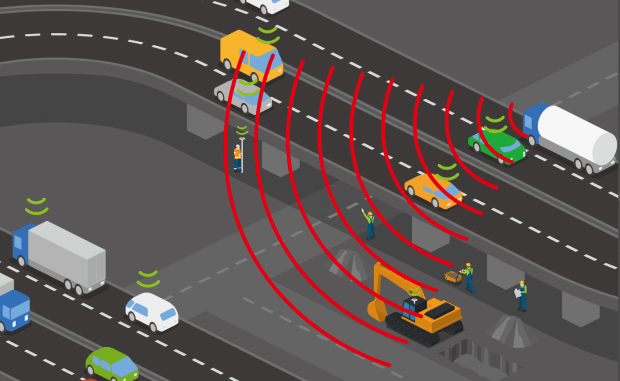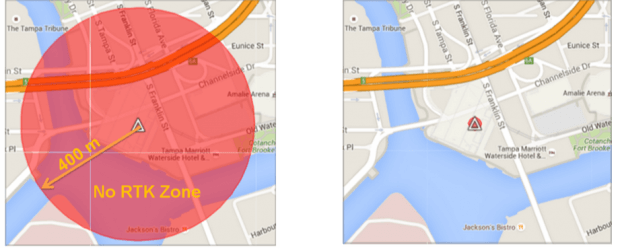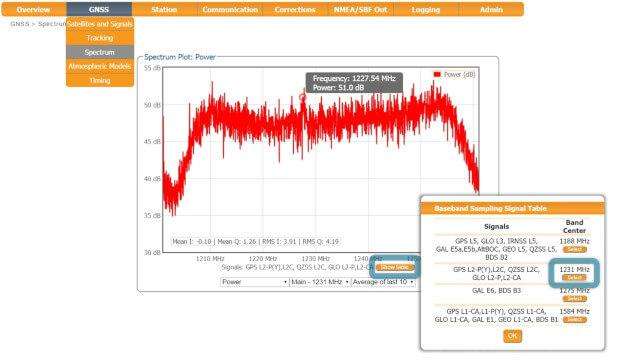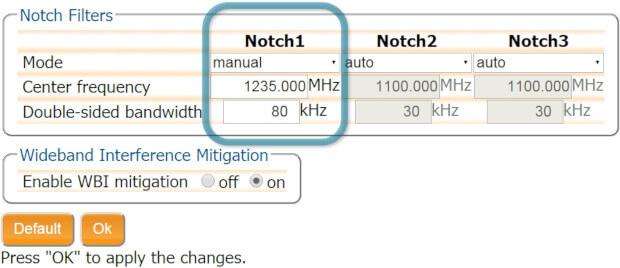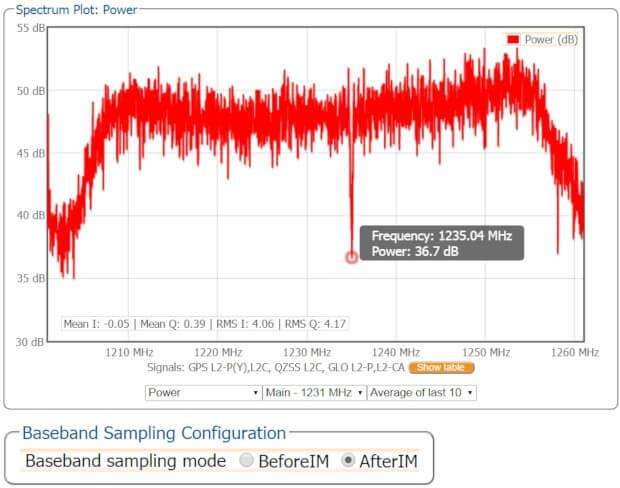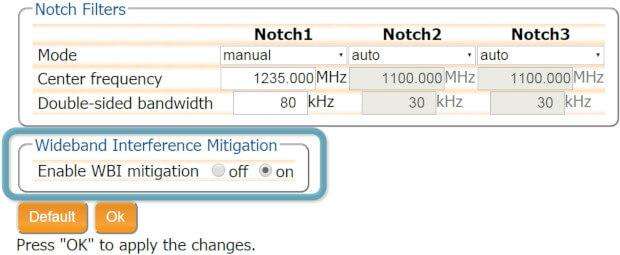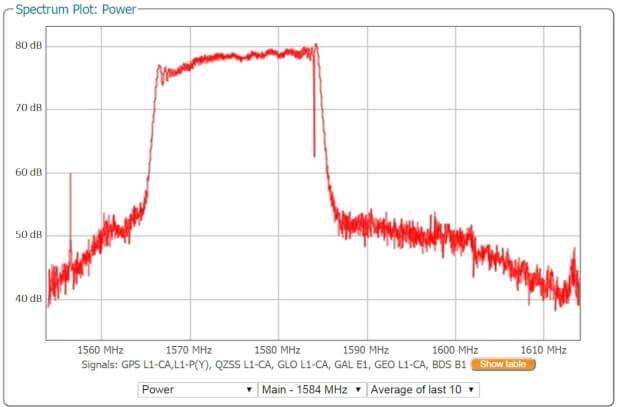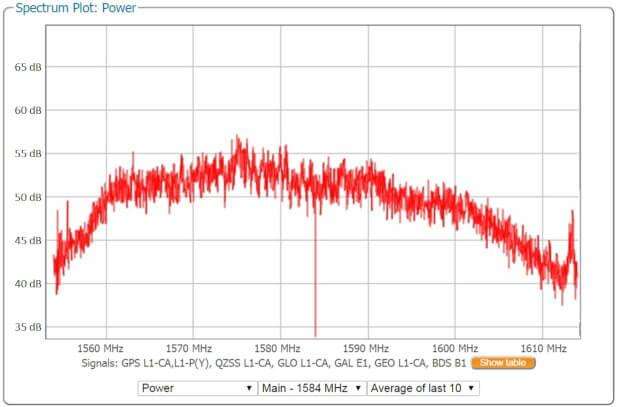AIM+ Anti-Jamming Protection
Explore our brochures:
The power spectrum plot
In the Spectrum window of the GNSS menu, you can monitor the RF spectrum and configure three separate notch filters to cancel out narrowband interference. The figure below shows the L2 frequency band with the GPS L2P signal at 1227.60 MHz indicated. Different bands can be viewed by clicking on the ‘Show table’ button as shown. The spectrum is computed from baseband samples taken at the output of the receiver’s analog to digital converters.
GNSS RF Interference Mitigation by configuring the notch filters
In the default auto mode of the notch filters, the receiver performs automatic interference mitigation of the region of the spectrum affected by interference. In manual mode, as shown configured for Notch1 in the above figure, the region of affected spectrum is specified by a centre frequency and a bandwidth which is effectively blanked by the notch filter.
With the Notch1 settings as shown above, the L2-band after the notch filter (After IM) is shown below with the blanked section clearly visible.
Wideband interference mitigation
Wideband interference of GNSS signals can be caused unintentionally by military and civilian ranging and communication devices. There are also intentional sources of interference from devices such as chirp jammers. The wideband interference mitigation system (WBI) can reduce the effect of both types of interference on GNSS signals.
Configuring WBI mitigation
The wideband interference mitigation system can be enabled by selecting ‘on’ as shown below.
WBI mitigation in action
The GPS L1 band interference shown in the below figure is produced by combining the GNSS antenna signal with the output from an in-car GPS chirp jammer.
When WBI mitigation is enabled, the effect of the interference is dramatically reduced as below figure shows
Explore further:
- Webinar: GNSS hacking, from satellite signals to hardware/software cybersecurity
- Brochure: 20 pages pdf: Everything you need to know about radiofrequency interference (RFI) on GNSS/GPS signals
- Insights Articles:

